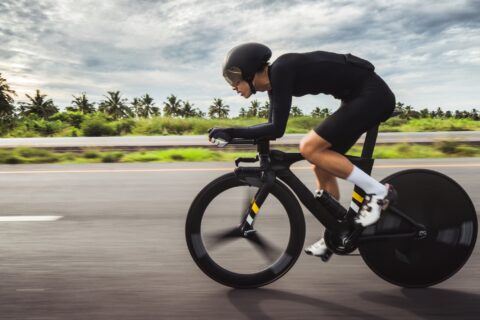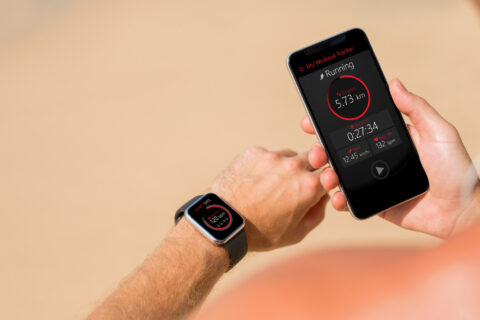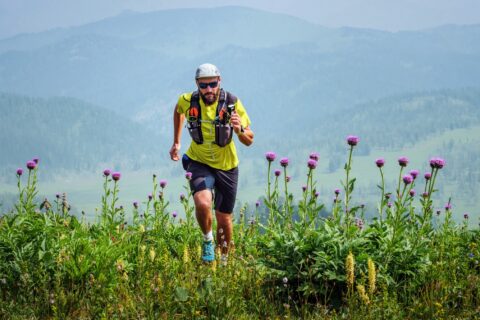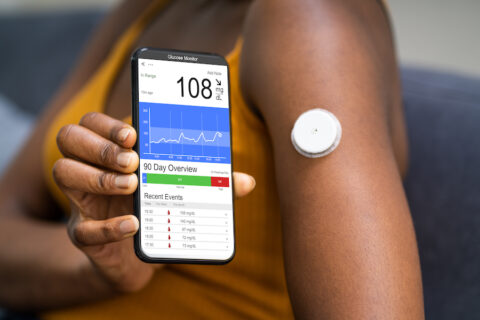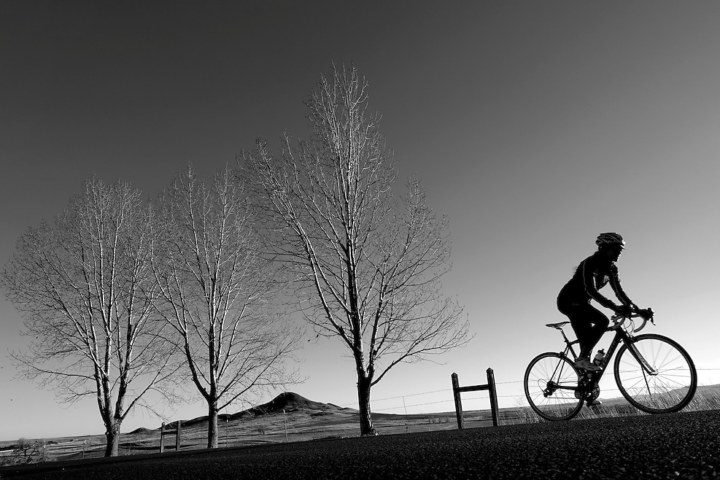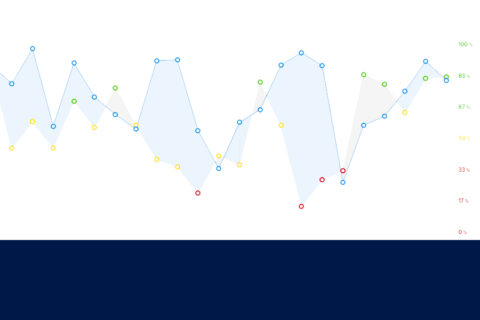The long, slow distance ride: It is a staple of base training. The execution of LSD rides might sound simple, but many people struggle to get it right. Some surge too often, thus eliminating any sense of steadiness. On the other hand, some people can be extremely consistent in their pacing.
Which begs the question: Can you be too steady on your LSD rides?
Coaches Trevor Connor and Ryan Kohler analyze ride data from one of Trevor’s athlete’s LSD rides. This particular athlete had a goal to ride exactly at the prescribed wattage. A good thing? Trevor and Ryan discuss.
For more on the correct execution of one of these fundamental rides, check out this workshop: Coach’s Corner: What Exactly Is a Long Slow Distance Ride?
Still wondering how these rides will help you go faster? Read Go Slow to Be Fast.
Video Transcript
Intro 00:02
Welcome to Fast Talk Laboratories, your source for the science of cycling performance.
Chris Case 00:06
Today coaches Trevor Connor and Ryan Kohler show ride data produced in one of Trevor’s LSD rides, otherwise known as a long slow distance ride.
LSD Ride From Niagara Falls to Toronto
Trevor Connor 00:17
Hello, and welcome back to another session of Coach Ryan Kohler and myself giving coaching tips. So, this one, I want to cover something I get asked about a lot, and this is an important thing for me, which is how to do that long, steady, slow ride. So, I’m going to show a few files here of how to approach them, how to deal with them, I’m going to start with showing you a ride I did from Niagara Falls to Toronto.
Trevor Connor 00:55
Okay, so I’m going to show you a few workout files today, showing what’s called the LSD ride. So that’s a term that’s thrown out a lot, it’s just referring to long, slow distance. So, you’ve heard us on the podcast talk a lot about this three-zone model, zone one being that low intensity, it’s exercise below your aerobic threshold. So, this is a true LSD ride, and I want to start with this one, to really show everybody how slow and easy these can be, because people are often quite shocked when I show them, so this is one of my rides, and you can see over here, my stats, average heart rate was 106, the highest I hit was 149, my average power was 137, this was a three-hour ride, so 137 watts.
Trevor Connor 01:58
Now, just to give you a benchmark on that my threshold is around 333-40, so that’s, that’s my FTP. So this is a slow, easy ride, a lot of people are very uncomfortable with this, my average speed 13.7 miles per hour, I was actually very happy with this ride, it was just slow and easy. Now it’s hard to see a lot of this in TrainingPeaks, I’m gonna go to WKO, and I apologize to those of you who can’t really, or don’t have WKO, so you can’t see this yourselves. But I have a little more sophisticated, a couple graphs in here, this one up here shows just my heart rate overlaid across my training zones, and you can see this light blue is my recovery zone, aerobic endurance is this fairly easy range, but still feeling like I’m getting a bit of something, that aerobic threshold is this AET, stands for aerobic threshold. So even though you see zone 1,2,3, these are all actually in the three-zone model, all in zone one You can see my heart rate is pretty low the whole time, just a good easy ride. Same thing down here, this is called the the power heat map, for any of you who are on Zwift, you might recognize this. So light blue is just basically recovery easy pace. Green means you’re getting up towards that aerobic threshold, and you can see here, this whole ride was pretty easy. When you get above aerobic threshold, so into zone two, you start seeing yellow, when you get up towards threshold, you start seeing red, and you can see my heart rate is red, that’s the red line. But this is all blue and green. So, I get asked a lot when you’re doing these long rides, Is it about average heart rate, average power? Or is it about being steady? And my answer is always you want to be really, really steady. So, I’m going to show you an example of that, here’s another ride that I did, where I was actually, so I call this an LSS ride, by reason for calling it an LSS ride is I once used that term with my athletes, I thought it was stupid, I tried to change it to AET ride, all my athletes said no, we really like LSS, so you’re stuck using it. It has absolutely no meaning whatsoever, and if I could change it, I would. It’s just long, slow, steady, but it’s actually riding right at that aerobic threshold. So, you look at my heart rate here, so here’s my AET zone, right about my aerobic threshold, my aerobic threshold is 145, if I zoomed in on this graph you’ll see, so I have a go just a little above my aerobic threshold 145, and the lower range here is 135, so this purple range here, which is my aerobic threshold is just a little bit over it, mostly below it. But if you look, this whole ride, I’m mostly just sitting right in that range trying to hold it.
LSD Rides, All About Consistency
Trevor Connor 05:28
So again, it’s about that consistency, it’s not, what did you average, but trying to stay, most your time in that zone, or in that range. Likewise, you see a very similar thing with my my power here. So again, the power is color coded. Green is my aerobic power and is right around that aerobic threshold, and you can see for most of the ride, I’m sitting right in that kind of green range. So, it’s just this good steady ride, and when you’re doing these long rides, when you’re looking for that adaptation, that’s what you want to see, you want to see steady, you want to just see city in that range. If you saw the altitude here, you would see it wasn’t a flat ride, well, you can kind of see it. So, these peaks here, let me actually just go right up here, so here’s the elevation profile, this wasn’t a flat ride, there were a lot of little kind of steep bumps, what you could see was I was being very careful about when I hit them, just slowing down and letting my power and my heart rate stay steady. I’m not hitting those bumps and suddenly going up to 400 watts, that’s to me how you do this long, slow steady or these aerobic threshold style rides.
Cardiac Drift
Trevor Connor 06:54
One of the other things that I look for is if you see down here, and I haven’t found a good chart for this yet, I’m looking for cardiac drift. So cardiac drift is where if you are riding at a steady wattage, you would see your heart rate rise relative to to the power. So here you see there’s my power line trend through the ride, you can see that’s going down slightly, you can see my heart rate line is going up slightly. And it has this what’s called a decoupling in WKO, at 7.76%, that’s actually a fairly significant decoupling. So, I was seeing some cardiac drift over the course of the ride. I attempted to create up here a graph that shows it a little better, and what do you want to see is this purple line is the second-by- second relationship between heart rate and power, and you want to see it sitting right around one, which is this dotted green line, and you can see I’m starting right around the one at the beginning of the ride, it’s going up over the course of the ride, so there’s my cardiac drift. If we went back to that LSD, the really easy ride, my guess is we would see far less cardiac drift, and that’s what you want to see on that easier long ride. So, let’s go down, and yeah, you can see I’m just kind of sitting right on that line, well, that’s actually a negative decoupling, which is a little, or no, it’s picking up in this strangeness right here. This is why I haven’t been able to perfect this, we really need to come up with a graph that deals with this, but sometimes on descents and other situations, you see these artifacts, and then it messes up the whole number, but if you look at the overall trend here, you can see I’m really sitting around that one line the whole way across. So here you can see there really isn’t a lot of decoupling, there isn’t a lot of cardiac drift, this is just artifacts, unfortunately. Let me show you one other and sorry, Ryan, I’ve been doing all the talking anything you want to point out here with this?
Ryan Kohler 09:05
It’s rock solid. I mean, yeah, you look at your heart rate and power, I mean, one of the initial questions is, how, you know, that I get from athletes is like, how do you maintain that when you’re on variable terrain? You know, and I think like you mentioned, just focusing on keeping it really steady, and one of the things that I like to think about too, is when we’re going for a steady effort is, particularly when I’m riding with athletes, I want to hear those gear changes happening, you know, I think it’s we almost get into this bit of a lazy mode, even on an easy ride, where, you know, we just sort of keep pedaling along, and then if we come up to some hills, we can get those done at a very consistent effort, but it actually takes that focus to say, Oh, I’m actually going to shift into a light gear, and adjust my cadence, and let that drop and, you know, really to keep that effort. Otherwise, it’s easy to let it spike. I mean, you know, riding so easy like that for a long time, there’s that sometimes itchiness when you hit a hill, to go hard and just get it over with, but then yeah, we can see what it does to the, to the data in the end.
Keeping it Steady is the Key to LSD Rides
Trevor Connor 10:13
You have to keep it steady. Let me show you an example of what you’re talking about. So here is a ride that I did with a group in Toronto, that was supposed to be one of these steady rides, I was doing with some friends. First of all, you can see my heart rates a little more all over the map. But let’s zoom in on my power graph here, and so some of this ride I did by myself, some of that I did with the group. So over here, I was more by myself. But here, let’s zoom in. This is the quote, steady ride with the group, which you can also see where you saw my previous ones, there was no stopping, I like to do these rides, like so I have on my bike computer, my elapsed time and my ride time, and I give myself this challenge of making them as close to one another as possible. I don’t like to stop on these long rides, the group I was with, they’re kind of, we’re gonna go semi hard, then we’re gonna stop for a little bit, then we’re gonna go semi hard again, and then we’re gonna stop for a little bit. So, look at this, zoom in, you see all these reds? So here’s a little hill, look at this, this red, here’s a hill, some more red, this was the hillier part of the course, and you can see, to stay with them just every time we were hitting these little risers, they’re pushing 400-450 watts, that is not the way, so you really see it here, so here again, I’m with them, they got to the end and really pushed a couple efforts, and then I finally said, “okay, I’ve had enough,” and then went and rode by myself. Look at the difference over here, you don’t see any of that red that you’re seeing in this stuff over here. So, we are all doing the same volume, they come back and go I did a long, steady ride, I’m guessing my average wattage for this stretch, and this stretch is fairly similar, same thing with my heart rate, but you see when you look at the profiles, they’re very different rides. They produce very different benefits. So as Ryan was saying, I tried, I will take athletes out and show them, we hit these rollers, when we do these little climbs, just how much you have to slow down and just crawl at that climb and they struggle with it, they’re just like, “why are you going so slow? I was taught that when I went to the center up in Canada, I had been there just a few weeks, and I did the same thing, thought I had to prove myself, and every time we hit these little hills I’d go really hard, and then one of the more famous riders at the center comes up to me after I took one at the front of the group particularly hard, and goes, “about that ride back there, you ever do that again you’re not coming on this ride ever.”
Aerobic Benefits
Ryan Kohler 13:03
Never reminds me of a ride, same thing, like learning as a young rider with a group when I was in Pennsylvania. We would do these weekly rides, they were weekly recovery rides, but they were in some of the hilliest terrain we could find, and it was specifically for that reason, where we would ride into the hills. We would get into our absolute lightest gear and we would, you know, we’d be out of the saddle climbing maybe, you know, 40 RPM, but it was like a walk, and we were able to chat the whole time, and after a few of those rides, that’s where I really started to notice like, “Oh, my legs feel good.” They called it the massage at one point, because it was it was just like, like you were massaging your legs, you’re moving them, but you came back there was really no stress and it was just a very light ride.
Trevor Connor 13:52
You get these big aerobic benefits, and you saw it with this ride, I showed you the best approximate cardiac drift that I could show you. That’s the indicator that it was a more stressful ride. It’s not these efforts that you’re looking for is, as you said, it’s kind of massaging the legs, it’s keeping it steady. So, here’s that ride I did by myself, and let me zoom in on a selection here that’s got some hills in it, as you can see, maybe pushed this one a little bit, but for the most part, I’m trying to keep it pretty steady.
Trevor Connor 14:28
Alright, thanks for joining us again. I’m Coach Trevor Connor, Joined by Coach Ryan Kohler. Head over to our forum, go to the section Training Concepts, at fasttalklabs.com to continue this conversation.


